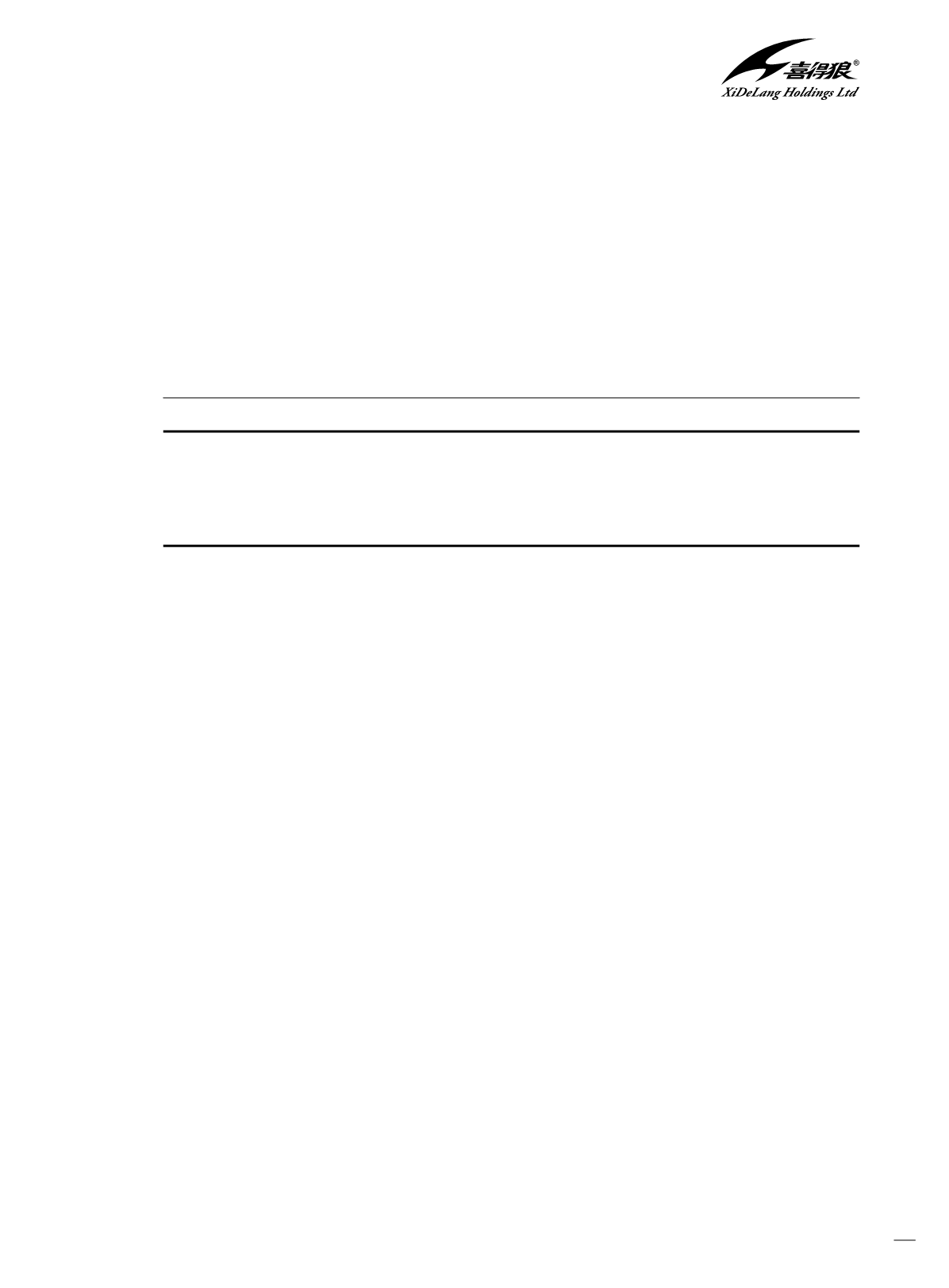
annual report 2014
I
Notes to the Financial Statements
31 December 2014 (Cont’d)
97
25. FINANCIAL INSTRUMENTS (cont’d)
(b)
Categories of financial instruments (Cont’d)
Company
Financial assets
2014
2013
RMB’000
RMB’000
Loans and receivables
Trade and other receivables
162,054
159,969
Cash and bank balances
818
998
162,872
160,967
Financial liabilities
2014
2013
RMB’000
RMB’000
Other financial liabilities
Trade and other payables
1,689
2,602
(c)
Methods and assumptions used to estimate fair values
The fair values of financial assets and financial liabilities are determined as follows:
(i)
Financial instruments that are not carried at fair value and whose carrying amounts are a reasonable
approximation of fair value
The carrying amounts of financial assets and financial liabilities, such as trade and other receivables,
trade and other payables and borrowings, are reasonable approximation of fair value, either due to their
short-term nature or that they are floating rate instruments that are re-priced to market interest rates on
or near the end of the reporting period.
The carrying amounts of the current position of borrowings are reasonable approximations of fair values
due to the insignificant impact of discounting.
26. FINANCIAL RISK MANAGEMENT OBJECTIVES AND POLICIES
The financial risk management objective of the Group is to ascertain that adequate financial resources are available
for the development of the business of the Group whilst managing its exposure to credit risk, liquidity and cash flow
risk, interest rate risk and foreign currency risk. Information on the management of the related exposures is detailed
below.
(i)
Credit risk
Cash deposits and trade receivables could give rise to credit risk which requires the loss to be recognised
if a counter party fails to perform as contracted. The counter parties are licensed financial institutions and
customers primarily located in PRC. It is the policy of the Group to monitor the financial standing of these
counter parties on an ongoing basis to ensure that the Group is exposed to minimal credit risk.
The exposure to credit risks of the Group, or the risk of counter parties defaulting, arises mainly from trade
receivables. The exposure to credit risks of the Group is influenced by the individual characteristic of each
customer rather than the industry or country in which the customers operate and therefore significant
concentrations of credit risk primarily arise when the Group has significant exposure to individual customers.


